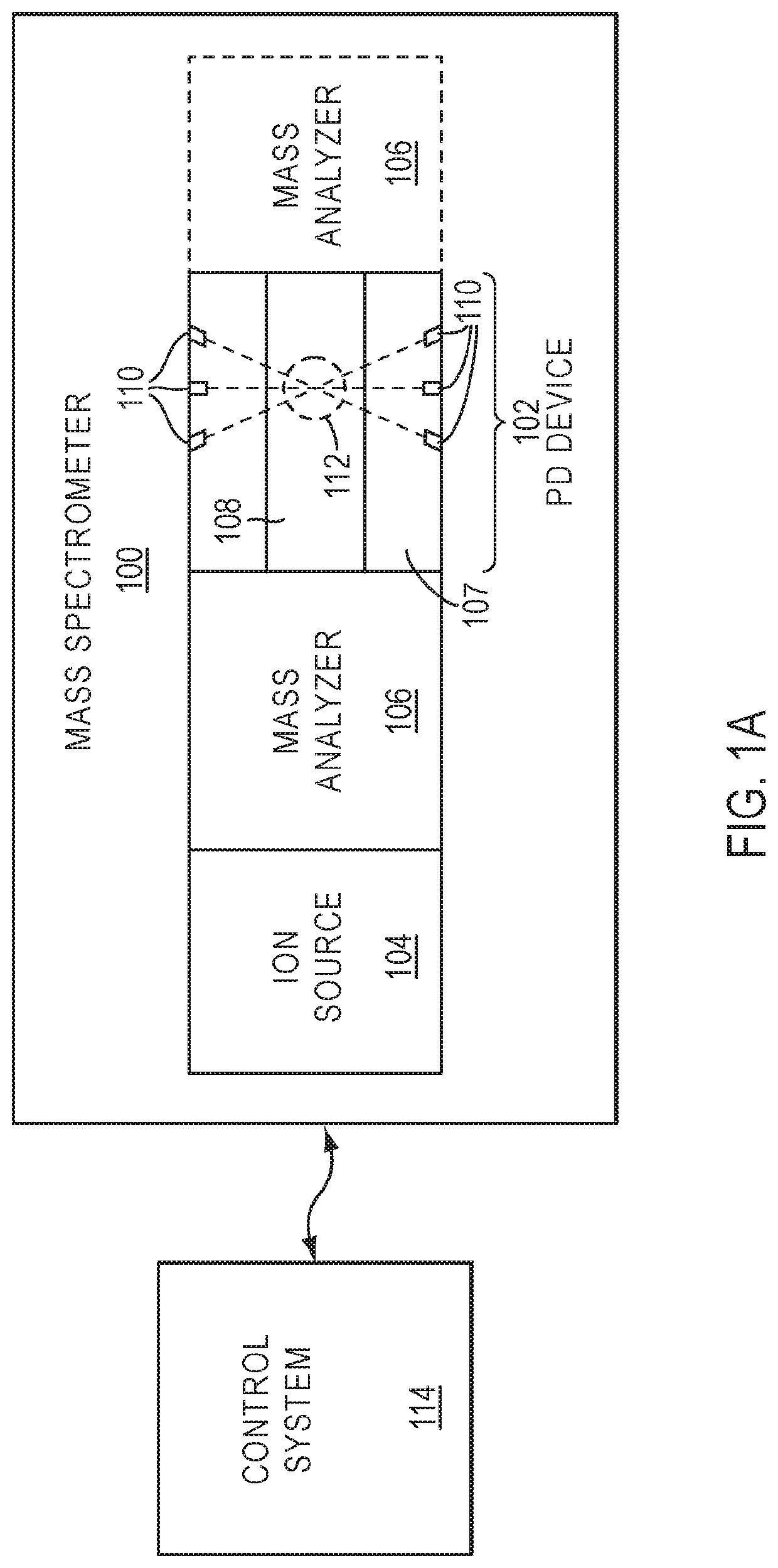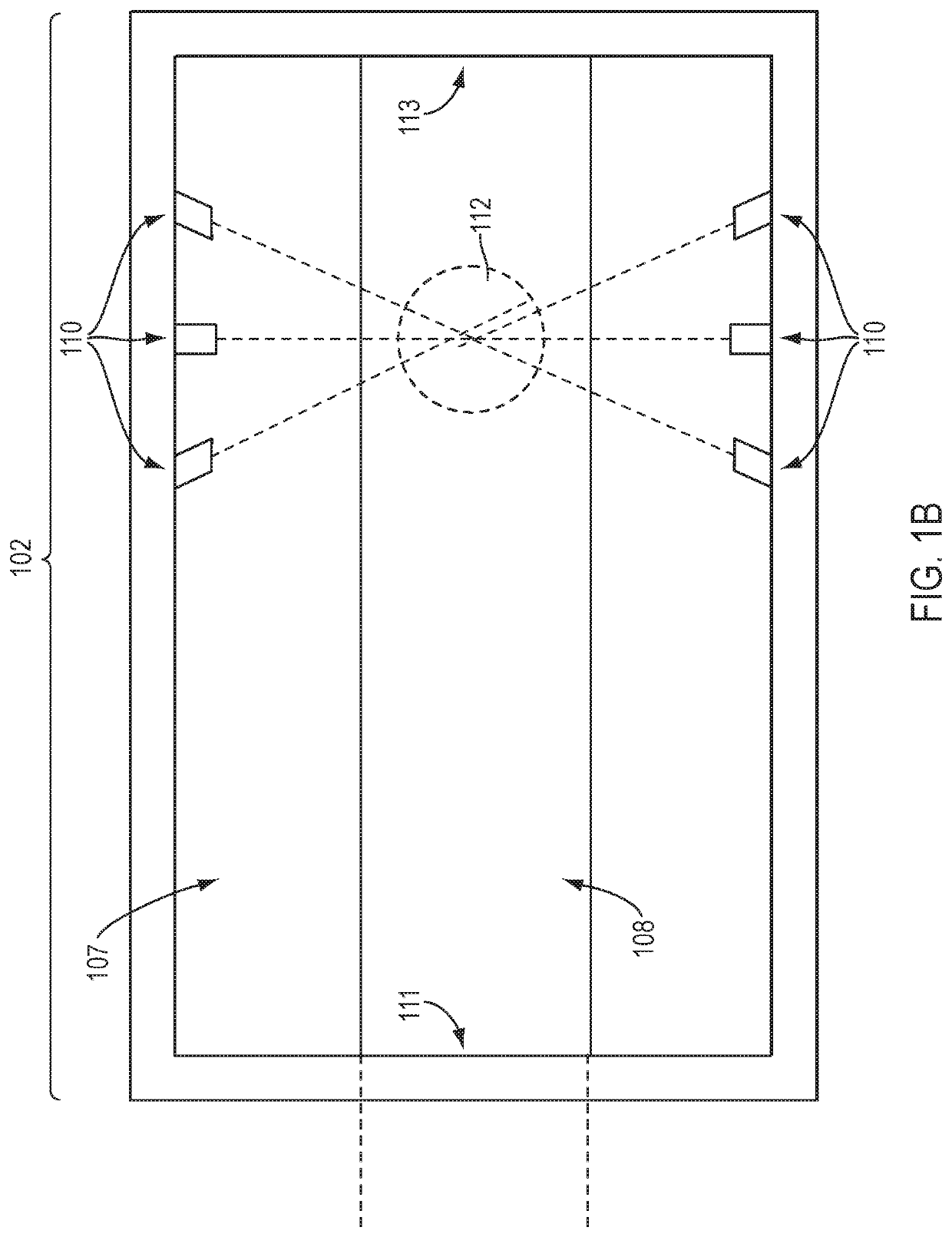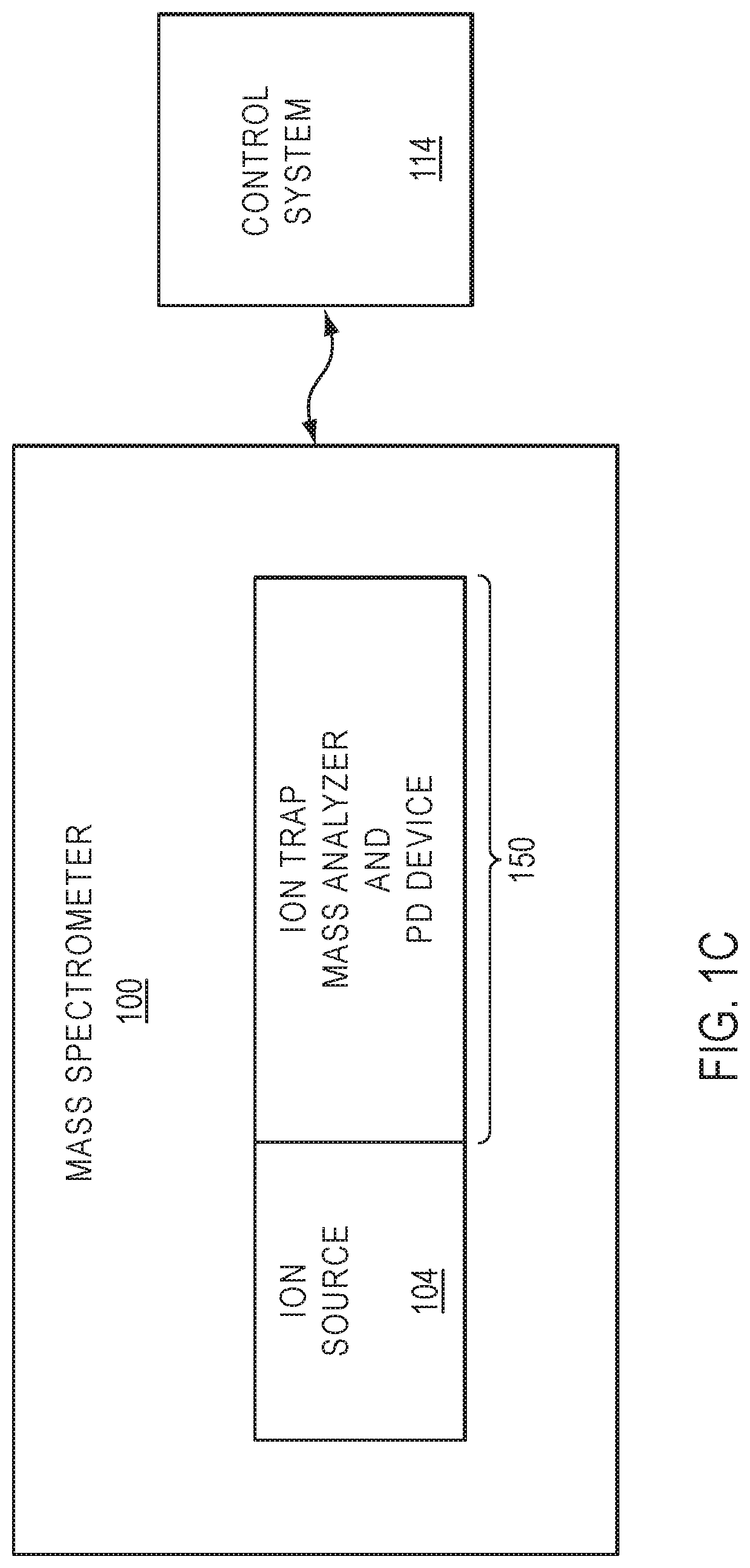Devices, systems, and methods for dissociation of ions using light emitting diodes
a technology of light-emitting diodes and devices, applied in the direction of electric discharge tubes, particle separator tubes, spectrometer circuit arrangements, etc., can solve the problems of fragmentation of ions, high cost of monochromatic lasers, and difficulty in dissociating ions,
- Summary
- Abstract
- Description
- Claims
- Application Information
AI Technical Summary
Benefits of technology
Problems solved by technology
Method used
Image
Examples
example 1
[0080]To demonstrate the utility of an ion photodissociation cell in accordance with the present disclosure, a model chemical specie, flavin mononucleotide (FMN), was processed using a PD device similar to PD device 400 in accordance with the present disclosure as described below. Fragment ions of m / z 243.2, 359.2, and 439.2 corresponding to losses of the side-chain, the phosphate group, and water, respectively, have been generated upon UVPD of protonated FMN, in addition to products of m / z 257.2 and 286.2 attributed to formation of lumiflavin and formyl-lumiflavin species, by a Q-ToF mass spectrometer equipped with a neodymium-doped yttrium aluminum garnet (Nd:YAG) laser for 266 nm UVPD, as disclosed at The Analyst, 139, 6348-6351 (2014) in the publication being titled “UV photodissociation of trapped ions following ion mobility separation in a Q-ToF mass spectrometer” by Barran et al., which is hereby incorporated by reference.
[0081]An experimental PD device 1, similar to PD devic...
example 2
[0085]As a gauge of the level of control over ion position and UVPD in experimental PD device 1, similar to PD device 400 described above, the photodissociation of protonated FMN was evaluated based on the position of the ion cloud in the experimental PD device 1. First protonated FMN was transferred into the experimental PD device 1 and held proximate to the front end region of the chamber for 1000 ms while the LEDs were irradiating an irradiation region proximate to the back end of the chamber, for example, as illustrated in FIG. 2A-2 (See also FIGS. 2A-2C, FIGS. 4A-4F). No fragment ions were generated in the process, as illustrated in FIG. 8A. In a separate trial, protonated FMN was held proximate to the front end of the cell and then transferred to an irradiation zone proximate to the back end of the cell 300 where ions were exposed to UV-LED radiation for a time period of 1000 ms (FIG. 2A-3). Extensive fragmentation occurred once the ions were moved to the back of the cell duri...
example 3
[0086]To optimize the slope of the DC potential gradient during compression of the ion cloud proximate to the back end of the chamber of experimental PD device 1, several trials of UVPD of protonated FMN were performed using DC potential gradients at varying slopes and the resulting spectra were monitored. The radiation time was kept constant for all trials at 500 ms. FIG. 9A shows the abundance of fragment ions (peak areas) plotted as a function of the DC potential gradient slope (V / mm). As can be seen from FIG. 9A, the fragment ions of m / z 243, 257 and 286 exhibited the most dramatic increases in abundance as the potential slope was increased to about −0.46 V / mm Applying a slope greater than −0.46 V / mm caused a decrease in the production of fragment ions as well as a decrease in the precursor abundance (not shown), suggesting that ions were being ejected from the chamber.
[0087]The results were further evaluated by observing how the MS / MS efficiency varied with the change in slope ...
PUM
| Property | Measurement | Unit |
|---|---|---|
| wavelengths | aaaaa | aaaaa |
| wavelength | aaaaa | aaaaa |
| wavelength | aaaaa | aaaaa |
Abstract
Description
Claims
Application Information
 Login to View More
Login to View More - R&D
- Intellectual Property
- Life Sciences
- Materials
- Tech Scout
- Unparalleled Data Quality
- Higher Quality Content
- 60% Fewer Hallucinations
Browse by: Latest US Patents, China's latest patents, Technical Efficacy Thesaurus, Application Domain, Technology Topic, Popular Technical Reports.
© 2025 PatSnap. All rights reserved.Legal|Privacy policy|Modern Slavery Act Transparency Statement|Sitemap|About US| Contact US: help@patsnap.com



